More than two-thirds of Americans who were hesitant to get the COVID-19 vaccine had received at least one dose or were willing to vaccinated by spring 2021, a new study suggests.
Researchers from Emory University in Atlanta conducted a survey of more than 4,600 respondents who answered questions about vaccines in 2020 and again in March and April of this year.
They found that one-third of adults who said they were hesitant to get the shots got at least an initial dose.
What’s more, nearly 40 percent who at first reported they were ‘unlikely’ to get immunized now said they were willing to get their shots.
Additionally, even though Hispanics were the ethnic group most likely to report willingness to get vaccinated, white Americans were the most likely to have actually gotten jabbed by the spring.
The team says the finding suggest that, although vaccine hesitancy waned from last year to this year, there are still ‘inequities’ to address in who has access to the shots.
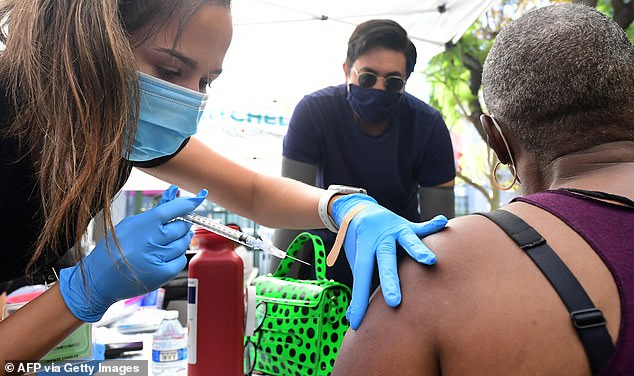
Researchers polled 4,600 adults about their likelihood of getting COVID-19 vaccines in 2020 and again in March and April of this year. Pictured: Registered Nurse Amber Boyd administers a dose of the Pfizer vaccine at a clinic for homeless people in Los Angeles, September 22
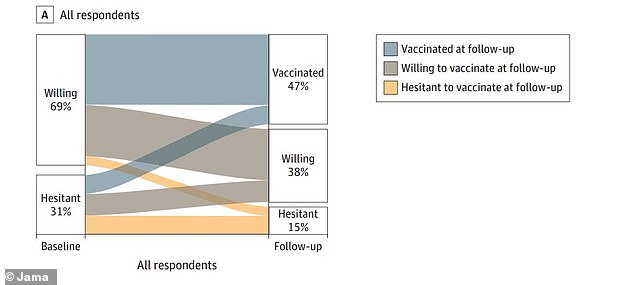
Last year, 69% of participants said they were ‘willing’ to get vaccinated while 31% were described as ‘hesitant.’ By spring 2021, 32% of the ‘hesitant’ group had received at least one dose and 37% were now ‘willing’ to get vaccinated’
Last year, when researchers were still developing and testing COVID-19 vaccines, a debate was igniting about getting the shots.
Questions swirled about whether or not manufacturers were cutting any corners and if then-President Donald Trump was going to push for a vaccine to be approved ahead of the 2020 general election.
A Pew Research Center poll in September 2020 found that U.S. adults were split 50/50 on whether or not they would get immunized.
Some were concerned about side effects while others said they wanted to ‘wait and see’ if the shots were effective.
Health experts have stressed that overcoming vaccine hesitancy is key to getting the remaining 71 million eligible Americans who remain unvaccinated to roll up their sleeves.
However, new research suggests that initial vaccine hesitancy is not necessarily tied to eventually getting the jabs.
For the study, published on Friday in JAMA Network Open, the team recruited 4,654 participants who were initially interviewed between August 9, 2020 and December 8, 2020.
People were asked if they were ‘likely’ or ‘very likely’ to receive a COVID-19 vaccine, categorized as willing, or ‘very unlikely,’ ‘unlikely,’ or ‘unsure,’ categorized as hesitant.
In the first wave of participants, 69 percent, or 2,378 people, were described as ‘willing’ while 31 percent, or 1,061, were described as ‘hesitant.’
Among age groups, 66 percent of those aged 18 to 54 were willing to get vaccinated while 34 percent were hesitant.
A higher share of those aged 55 and older were willing to get their COVID-19 shots at 74 percent compared to the 26 percent who were hesitant.
During the first wave, Hispanics were the race/ethnic group most willing to be vaccinated at 71 percent compared to 69 percent for whites and 57 percent for blacks.

Adults between ages 18 and 54 were more than twice as likely to report hesitancy in spring 2021 at 19% compared to adults aged 55 and older at 7%

Although Hispanics were the ethnic group most likely to report wanting to get vaccinated in 2020 at 71%, whites were the most likely to have actually gotten jabbed at 51% by spring 2021
Meanwhile, African-Americans were the most likely to be hesitant at 43 percent compared to 31 percent for whites and 29 percent for Hispanics.
In the past, racist health policies have preyed upon America’s communities of color, making them hesitant to get vaccinated..
One of the most well-known examples are the Tuskegee experiments from 1932 to 1971, in which black men were used to track the progression of syphilis.
However, the study was run without their consent and they never received treatment to cure the sexually transmitted infection.
There were also eugenics movements that saw black, Latina and Native American women sterilized across the country in the 20th century.
A second wave of the survey was conducted between March 2, 2021 to April 21, 2021 asking not only about the likelihood of getting a COVID-19 vaccine but also whether or not they had been vaccinated.
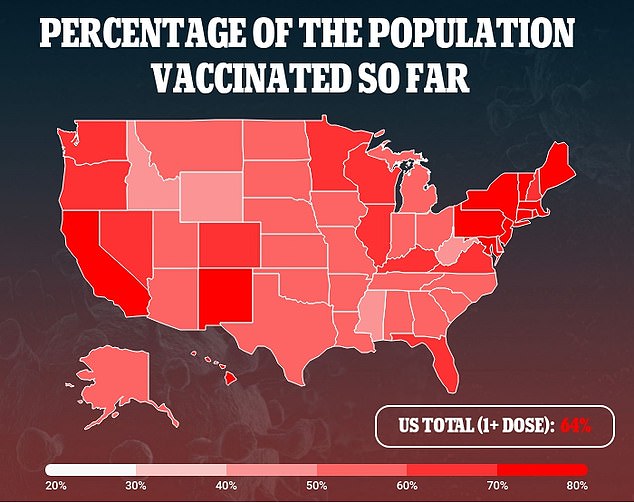
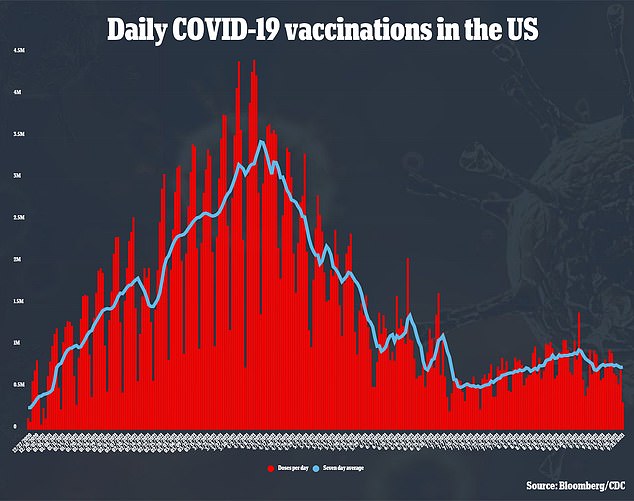
Researchers found that 54 percent of the willing group had gotten at least one dose and 39 percent were still likely to be vaccinated when shots became available to them.
But surprisingly, among the group that was hesitant in 2020, 32 percent had received at least one dose by late April 2021.
An additional 37 percent said they were now likely to be vaccinated when vaccines became available.
At the follow-up, 71 percent of those aged 55 and older had been vaccinated compared to 22 percent or were willing and seven percent hesitancy.
Among younger adults, aged 54 and younger, 31 percent had received at least an initial shot, 50 percent were willing and 19 percent were still hesitant.
It is worth noting that, at the time, vaccines were not yet available everywhere for the youngest American adults, aged 30 and below.
When it came to races, white Americans were the most likely group to have been vaccinated at 51 percent compared to 47 percent of blacks and 31 percent of Hispanics.
‘Changes in hesitancy have not alleviated health inequities in vaccines received, and further studies are needed to explore the reasons why vaccine hesitancy is changing over time by group,’ the researchers noted
‘Vaccine hesitancy is waning, yet inequities in receipt remain. There is a clear public health opportunity to convert higher vaccine willingness into successfully delivered vaccinations.’
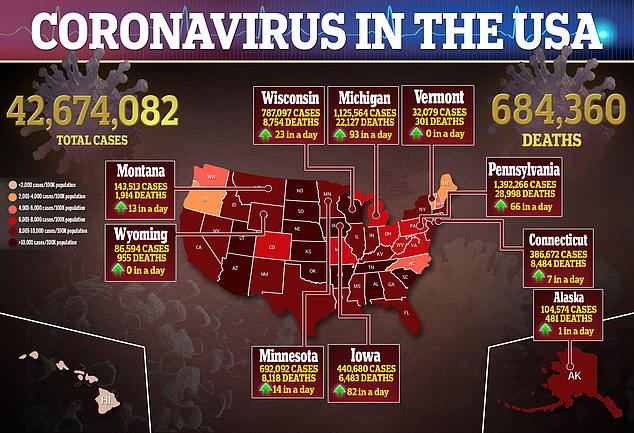
Source link : https://www.dailymail.co.uk/health/article-10025051/A-Americans-hesitant-COVID-19-vaccine-received-one-dose-April-2021.html











